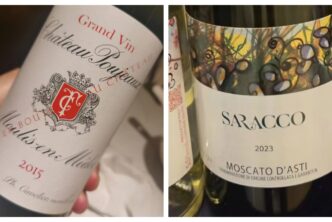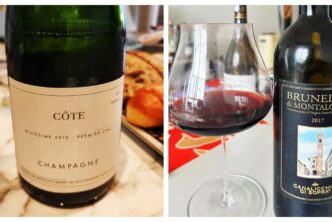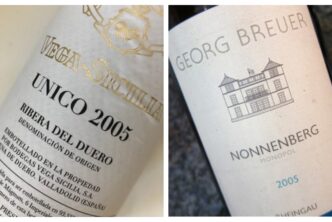Trimbach 2010 Riesling Cuvée Frédéric Emile Selection de Grains Nobles 96
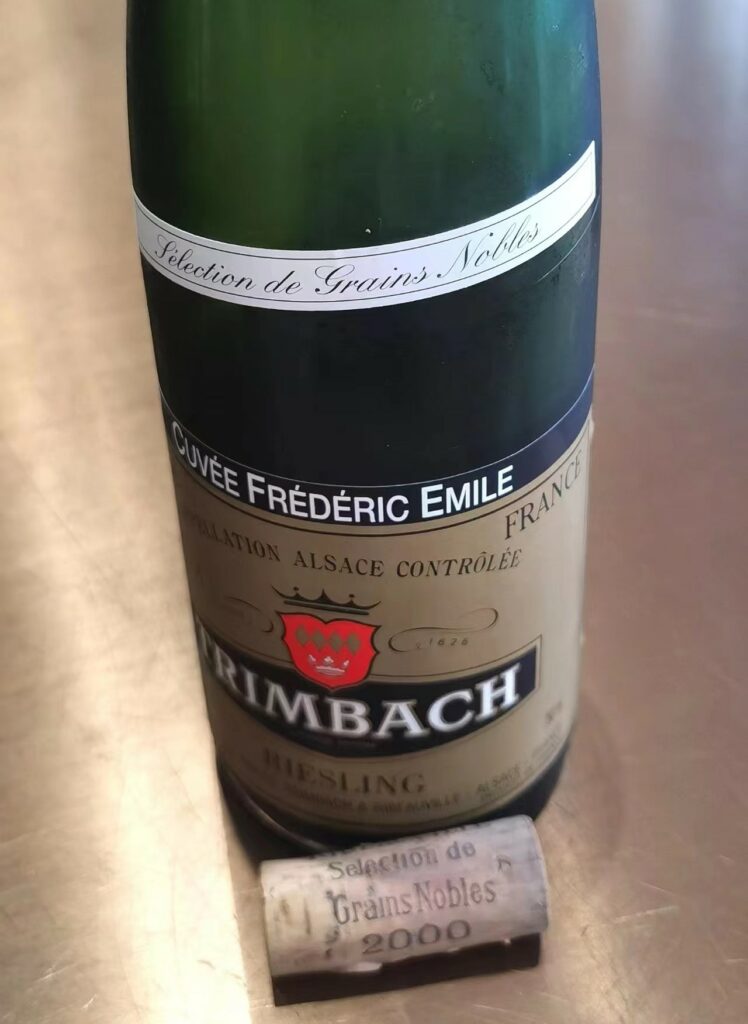
Trimbach’s Riesling Cuvée Frédéric Emile is one of the world’s five or so greatest dry Riesling wines. First produced in 1967, and then only in the best years (according to Jean Trimbach no Cuvée Frédéric Emile was made in the 1968, 1969, 1972, 1977, 1980, 1984, 1987 or 1991 vintages, while 2003 and 2010 saw the smallest production ever), it is made from a blend of grapes grown in the very steep Geisberg and the Osterberg grand cru vineyards (for comparison’s sake, Trimbach’s even more famous Riesling Clos Ste. Hune is made from grapes grown in the Rosacker grand cru). The south- and southeast-facing Geisberg and Osterberg reach about 250 and 350 meters in altitude and rise just behind the winery buildings in the charming, very pretty, Alsace town of Ribeauvillé. The two grand crus are characterized by different geologies and their respective wines are also very different: Geisberg (stony clay over multicolored sandstone) and Osterberg (stony clay over calcareous marl, with increasing amounts of multicolored marl, especially in the eastern portion of the cru). That being true, it is also true that Trimbach’s vines in the Osterberg are situated right next to the Geisberg, such that the differences in terroir between the two grape sources are not as diverse as they could be (still, while the I can almost always tell when there is 10% or so more of one cru than the other). What is also similar with these two areas of the Geisberg and the Osterberg is that they are both subject to the breeze coming through the deep valley of Aubeure, so it’s rare that any kind of rot, noble or otherwise, takes hold of the fruit. This is why the Riesling Cuvée Frédéric Emile is one of the purest, most chiseled, linear and classically dry expressions of Riesling wine made anywhere in the world. For this same reason, late harvest wines, Vendanges Tardives or Selections de Grains Nobles have been rarely made with the Riesling Cuvée Frédéric Emile. However, in stellar vintages that were loaded with Botrytis cinerea, such as were the 1989, 1990, 2000 and 2001 vintages, some late harvest Riesling Cuvée Frédéric Emile wines were made.
The Trimbach 2010 Riesling Cuvée Frédéric Emile Selection de Grains Nobles is a work of art. Bright golden yellow colour with both green and amber tinges. Fabulous rot-ennobled, high-toned aromas of spicy botrytis, yellow peach, cinnamon, dried apricot and honey roar from the glass, lifted by hints of white flowers, lemon peel and powdered stone. Wonderfully glycerol yet tangy on the palate, with a chewy quality and harmonious acid thrust nicely framing and extending the creamy, honeyed flavours of orchard and tropical fruit on the extremely long, pure minerally finish. Thought many wonderful Alsace wines were made in 2000, a relatively warm year I have never been the biggest fan of, this wine reaches heights that are simply beyond 99% of anything that was made in that vintage and is clearly an exceptional wine. Drinking window: 2022-2042.
Canalicchio di Sopra 2016 Brunello di Montalcino Riserva 99
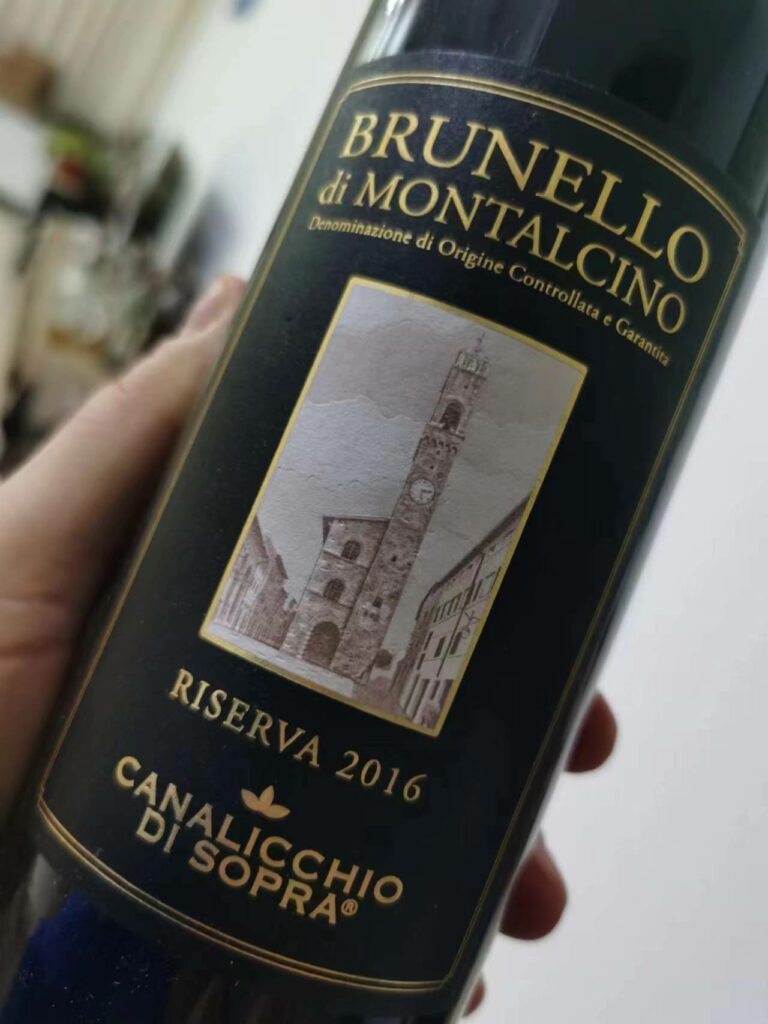
Bright ruby. Forward, open-knit, broad aromas of strawberry, ripe red cherry, blonde pipe tobacco, tangerine peel, blood orange and licorice have a lovely violet. At once larger-scaled and softer than the regular 2016 Brunello (the extra time spent in wood has done its job), with velvety-smooth but superconcentrated flavours of red fruits, truffles, minerals and milk chocolate lingering extremely long on the aftertaste. Remarkably supple and forward, this will no doubt age well though it can be drunk sooner than you might have expected from a Brunello Rsierva. No matter, it’s a knockout. Made from grapes grown in two specific vineyards, the Vigna Vecchia Mercatale (80%) and the Vigna Montosoli Filari Lunghi (20%), each of which provide this stunning wine with something extra. The former is a clay-rich site with a wealth of minerals and delivers wines that are at once savoury and fresh, not to mention structured. The latter is characterized by clay-loam and higher content of limestone. That last fact, plus the fact it is situated at a slightly higher elevation (both vineyards lie roughly between 280-295 meters above sea level), makes for wines of greater lift and vibrancy. Canalicchio di Sopra is one of Montalcino’s top dozen estates; the Brunello Riserva is their flagship wine is, which they make only in the best years. It’s safe to say that they have aced the 2016 vintage like never before: I think the is Canalicchio di Sopra 2016 Brunello di Montalcino Riserva is not just their best Brunello Riserva ever, it might very well be their best Brunello ever, period. Drinking window: 2026-2040.

 中文
中文
